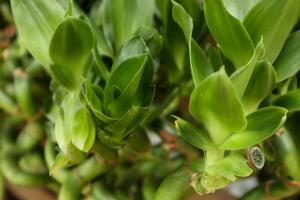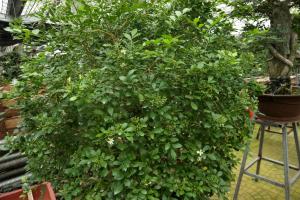When to Plant Bare Root Trees in Wisconsin
Wisconsin is known for its cold and snowy winters, but that doesn't mean you can't plant trees during this time. In fact, bare root trees are often planted during the dormant season, which typically runs from late fall to early spring. However, the ideal time to plant bare root trees in Wisconsin depends on various factors, including the species of tree, soil condition, and weather patterns.
Choosing the Right Species
The first factor to consider when planting bare root trees in Wisconsin is the species of tree. Different types of trees have unique preferences for planting time and soil conditions. For instance, oak trees and walnut trees should be planted in the fall when soil temperatures are still warm, while maple trees and birch trees can be planted in the spring when the snow melts away.
Additionally, the hardiness zone of the tree should be taken into account. Wisconsin is divided into four hardiness zones, ranging from zone 3 in the north to zone 5 in the south. Therefore, it's important to choose bare root trees that are adapted to Wisconsin's climate and can survive the harsh winter conditions in your specific region.
Soil Condition
The second factor to consider is the soil condition. Before planting bare root trees in Wisconsin, you need to ensure that the soil is well-drained and has a proper pH level. The ideal pH level for most trees is between 6.0 and 7.0. If the soil is too acidic or alkaline, you may need to add lime or sulfur to balance the pH level.
Furthermore, it's recommended to add organic matter to the soil to improve its texture and nutrient content. This can be done by mixing in compost, peat moss, or aged manure before planting. However, avoid adding too much organic matter as it can lead to compacted soil and poor drainage.
Weather Patterns
The third factor to consider when planting bare root trees in Wisconsin is the weather patterns. It's important to avoid planting when the soil is frozen or when there is snow cover. Instead, wait until the ground thaws and dries out a bit before planting.
The best time to plant bare root trees in Wisconsin is usually late fall or early spring, depending on the weather conditions. Late fall planting allows the tree roots to establish themselves before winter, while early spring planting gives the tree enough time to develop before the hot summer months.
Conclusion
Overall, the ideal time to plant bare root trees in Wisconsin depends on several factors, including the species of tree, soil condition, and weather patterns. To ensure the success of your tree planting, choose appropriate species, prepare the soil properly, and plant at the best time possible. With proper care and attention, your bare root trees will thrive and provide many benefits to your yard and community.

 how many times do yo...
how many times do yo... how many planted tre...
how many planted tre... how many pine trees ...
how many pine trees ... how many pecan trees...
how many pecan trees... how many plants comp...
how many plants comp... how many plants can ...
how many plants can ... how many plants and ...
how many plants and ... how many pepper plan...
how many pepper plan...
































